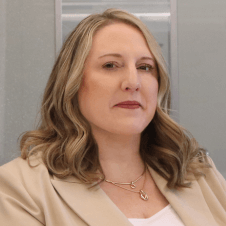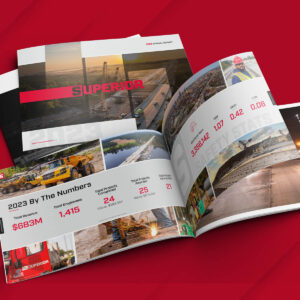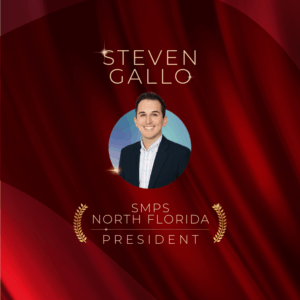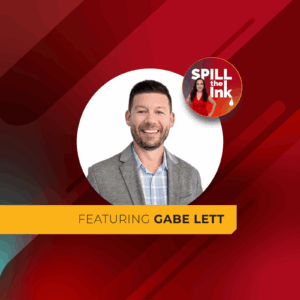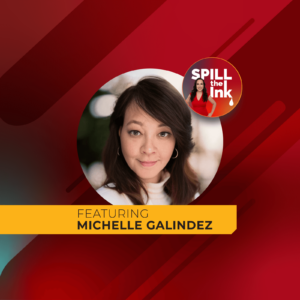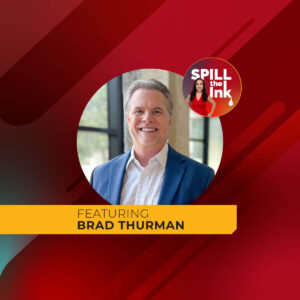
Spill the Ink: The Reputation Ink Podcast
The Art of Alignment: Branding in Decentralized AEC Firms
When AEC firms grant decentralized offices free rein to create their own messaging, the results can be damaging: wasted resources, confused clients, weakened competitive positioning and marketing teams that unknowingly sabotage each other’s work. Yet many firms continue operating this way, treating brand fragmentation as an inevitable cost of doing business across multiple markets.
In this episode of “Spill the Ink,” Michelle Calcote King sits down with Amy Zelenka, Director of Marketing at Affiliated Engineers, Inc. (AEI) to explore what happens when AEC firms allow their decentralized structure to fragment their brand identity across offices, markets and practice areas. According to Amy, the solution isn’t centralized control, but rather strategic alignment that preserves regional flexibility while ensuring consistent messaging.
Here’s a Glimpse of What You’ll Learn
- Who Amy Zelenka is and her journey from Fortune 100 companies to AEC marketing.
- About Affiliated Engineers and how the 900-person MEP firm tackles complex building challenges.
- Why decentralization can create bigger brand challenges for AEC firms than for other industries.
- The hidden costs of brand fragmentation, including wasted time, lost credibility and weakened differentiation.
- How the seller-doer model can contribute to inconsistent messaging across offices.
- Why a hybrid approach works better than purely centralized or decentralized marketing.
- Why effective brand guidelines must go beyond visual identity to include strategic messaging.
About Our Featured Guest
Amy Zelenka has spent 25 years building marketing expertise across diverse industries, from Fortune 100 companies to startups, before finding her calling in architecture and engineering. She previously served as Global Marketing Director at Jensen Hughes and led marketing across three business units at Johnson Controls International. At AEI, where she’s Director of Marketing, she drives brand development, digital strategy, communications and marketing database management.
Amy holds an MBA from the University of Wisconsin and combines strategic thinking with hands-on execution for AEI’s 900-person organization. Her approach blends creativity with data-driven insights, connecting AEI’s engineering talent with opportunities to tackle the industry’s most complex building challenges.
Resources Mentioned in This Episode
- Check out Affiliated Engineers Inc. (AEI)
- Follow AEI on LinkedIn, Facebook and Instagram
- Connect with Amy Zelenka on LinkedIn
- Say hello to Michelle Calcote King on LinkedIn
Sponsor For This Episode
This episode is brought to you by Reputation Ink.
Founded by Michelle Calcote King, Reputation Ink is a marketing and public relations agency that serves B2B professional services firms of all shapes and sizes across the United States, including corporate law firms and architecture, engineering and construction (AEC) firms.
Reputation Ink understands how sophisticated corporate buyers find and select professional services firms. For more than a decade, they have helped firms grow through thought leadership-fueled strategies, including public relations, content marketing, video marketing, social media, podcasting, marketing strategy services, creative services and more.
To learn more, visit www.rep-ink.com or email them at [email protected] today.
Transcript
Disclaimer: What you’re reading is an AI-transcribed version of our podcast. It may contain mistakes, including spelling and grammar errors.
[00:00:00] Amy Zelenka: I really think that the hybrid approach works, and it works really well. You kind of go back to the decentralization and you can’t expect everything to be centralized tomorrow, and nor should you want it to be. I don’t think it works.
[00:00:18] Announcer: Welcome to Spill the Ink, a podcast by Reputation Ink, where we feature experts in growth and brand visibility for law firms and architecture, engineering and construction firms. Now let’s get started with the show.
[00:00:34] Michelle Calcote King: Hi everyone. I’m Michelle Calcote King. I’m your host, and I’m also the principal and president of Reputation Ink. We are a public relations and thought leadership marketing agency for B2B professional services firms, including AEC firms. To learn more, go to rep-ink.com.
As everyone in this industry knows, many AEC firms are naturally decentralized. That structure brings unique challenges from diverse markets, offices, and practice areas. They all shape the brand through the contributions of various stakeholders. However, these parties often lack the same tools, structure or guidance to align their efforts with the broader vision and bringing that cohesion, building that cohesion requires frameworks that enable shared ownership, alignment, and strong leadership support. So today I have Amy Zelenka here today to share her perspective on navigating these challenges. She is the director of Marketing at Affiliated Engineers Inc. AEI, and has previously led marketing efforts at companies like Jensen Hughes and Johnson Controls International.
She’s got 25 years of experience and an MBA from the University of Wisconsin. And she brings strategic clarity, creative leadership, and data-driven insights to align marketing with business growth across complex organizations. So thank you for joining me today. Really excited to talk about this.
So before we dive into brand strategy, which I love talking about. Could you share a little bit more about yourself and your firm?
[00:02:11] Amy Zelenka: Yeah. You did a great windup for me, so it’s kind of hard to top that Michelle, but I will try to. I’ve been characterized as being a Swiss army knife of different experiences, but I’ve worked for Fortune 100 companies, scrappy startups, nonprofits, and ended up getting into AEC, which I really love, and I’m invested in it now. It was a journey to get here. But yeah, and I work currently for Affiliated Engineers. As Michelle said. Which we call AEI. We are a top ranked MEP firm in the country here.
We have close to 50 years of experience, which is wonderful from a longevity perspective and 900-plus employees. So we’re growing every year, very excited. We take on some of the biggest challenges out there in the marketplace. We support clients and partners for some of the top brands in the country and in the globe.
And also institutions and federal institutions and the like. And my role at AEI is, I’m the director of marketing. I focus on digital marketing, marketing communications as the umbrella brand and creative, which is why I’m here today. And then also marketing database, which in our organization is CRM and the digital asset management platforms.
So that’s a big job. Yeah, it’s a big job, but I have a team. That’s awesome. So it’s good.
[00:03:43] Michelle Calcote King: Awesome. Well, so, and especially so as Head of Marketing for a 900-person organization, you’ve seen the challenges that run across this industry. What do you see as the challenges facing firms from presenting a cohesive market identity?
[00:04:03] Amy Zelenka: Yeah, and I think you said it right away with decentralization, just by nature, what we do in AEC and specifically MEP For AEI, I’ve just used a ton of acronyms, but I think all of us can handle it. The viewers can handle it because we are an AEC, so everybody’s gonna go “Yeah, I get it.”
But I say that decentralization is there. And working for a Fortune 100 company, I came from a place where you had your local brands, your brands that are at the ground level, and then you have this overarching entity, like brand governance and that type of group that oversees the entire brand. So we don’t have that. We don’t have, “Hey, I’m walking into a retail store and everything looks the same.” Everything feels the same. You go in one state and then go in the other state and they’ll say, that’s not how it is with us. And we all know it. If you do have it, congratulations to you.
But for me, I think some of the contributing factors are the fact that a lot of us grow organically within each region. We grow organically. We are tied to a specific client. I know that you get notoriety with that client. You start opening offices there to be on their team. There’s regional and market driven reasons for that. I think another piece, and I’m just giving you probably more information, but just where my viewpoint is, is how you get there is that you have project-based work. So everybody’s just so focused on the client that you’re saying these technical things.
It’s just customized to that client. So you’re always creating that disconnected, decentralized kind of messaging and storytelling. And I think also the marketing organization creates that decentralization because a lot of organizations have somebody embedded in a particular office.
True. And then you have a centralized office. If you’re lucky, you have a centralized group too that works in partnership. So.
[00:06:04] Michelle Calcote King: Yeah. Definitely I see that model with marketing often where they’ve got a person assigned to a geography or a market focus or service focus, that kind of thing.
And I can see the challenges there. What do you think are the often those business consequences from this sort of brand fragmentation or companies that have let their narrative sort of get fragmented across these different areas?
[00:06:32] Amy Zelenka: It’s a really good question that I grapple with often because you really have to, as a marketer, figure out how to talk to those business leaders in language that they understand.
But then there’s these soft ramifications that if you bring them up, they’re like, “Yeah, okay.” But I really do think that the soft ones boil down to three for me. So like one is you’re diluting your differentiation. So the last thing you want to have when you ask a leader what makes us special and what makes us different is for somebody to go “nothing.”
So that’s a messaging part, like, please don’t say that to me. My heart will drop. But you really do make yourself weak to competitors because the competitors are out there saying exactly what makes you unique. I would also say that there’s this inefficiency thing that I never thought about until I got into AEC was that if you have somebody in Seattle that’s writing something about an energy and utilities project, and it’s just canned information.
Somebody out in Gainesville, Florida is writing the same thing. Guess what? You just wasted two hours of the company’s time.
[00:07:41] Michelle Calcote King: Mm.
[00:07:42] Amy Zelenka: Yeah. And you could have just wasted no time and had a centralized place to grab from and use. So that, and that happens a lot. And you have to work hard to go against that.
I would also say you lose credibility, like clients and partners are smart. If they’re a larger company, they’ll be like, “This looks like a different company. This looks like a different company. What are you?” You lose credibility. Now, I’ll say the hard metrics, which are hard to have, not impossible, but difficult to provide if you’re not set up accordingly are drop in lead generation, a drop in MROI, which all of us know as marketing, return on investment, and even, yes, even revenue. I would argue that that will diminish your revenue and it’s really hard to talk to a business leader and for them to be like, “Well prove it.” Right. But we can’t. And if you have right tracking in place, you actually can.
[00:08:39] Michelle Calcote King: Yeah, absolutely. What about how the seller doer model, how does that model play into this fragmentation? And have you seen any sort of governance models that help? Because we know the seller doer model, it’s there for a reason. Prospects want to engage with people who really understand their needs.
But how, what have you found that, one, how does that drive that inconsistency and are there ways to get around that?
[00:09:09] Amy Zelenka: I mean, I think you’re spot on when I reflected on this, and I reflect on it very often because it’s something that happens every day. There is something good about it because you have somebody that knows how to do the work that’s talking to a client and saying, “Hey, you have this next project, we can do it.”
But that in kind, you’re expecting them to be a business development individual and a marketer, and it’s just not, it’s not feasible for everybody to be great at everything. As much as we want to think we can, you can’t. So it does create that inconsistency as that person shapes a narrative that might not be our company narrative.
I would say a couple things. If you have a centralized marketing team. And again, it varies and have been at organizations where it’s all central and some of it that’s all local, completely decentralized. But if you have something that’s kind of a hybrid approach, actually I think that works the best.
You have people that are tasked to be, best practice a resource for best practices. And you don’t want to be like, we know everything and the folks over in this other office don’t, it’s not the truth at all. But we would do it every day, the centralized group and then working with the local group.
You have to have that relationship. If you can create regional facilitators that are responsible for a region and talking to those offices and those marketing leaders come back to Central and say, “Here’s what we’re seeing.” You have that relationship and I think that’s great. The other thing I think is wonderful is to have a committee, and maybe people don’t want to use the word committee ’cause it’s like very official, but have a group of practice area leaders, market leaders, people that are out there and that you can get voice of client from.
Use them as a resource. Use them as a resource so that way, you can shape that messaging and you can be more of a partner and actually have marketing strategies that connect with what’s really going on.
[00:11:21] Michelle Calcote King: Yeah. I like that idea. And it kind of goes along with the next thing I wanted to ask you about is you say that a top-down approach is not the solution. Tell me what you see as the alternative to that in terms of achieving this consistency in your brand messaging.
[00:11:43] Amy Zelenka: Yeah, I mean, I think it goes back to the nuance of hybrid and I guess maybe I’m being a broken record, which is a good thing ’cause that means there’s some truth to it and some part of my psyche buys into it. But I really think that the hybrid approach works, and it works really well. You kind of go back to the decentralization and you can’t expect everything to be centralized tomorrow. And nor should you want it to be.
I don’t think it works. Yeah. I just don’t think it works. And I think you have to have that partnership with your regional marketing leaders as well as your centralized and your regional or office-level, practice area leaders. I mean everybody, every leader that’s in each location. I think you can’t just say you have to do this, it has to have some give and take.
So you have flexibility, and then also you have consistency. You have to work on those two things. So. Yeah. Did you ask me if I, what I would do?
[00:12:40] Michelle Calcote King: No. Well, I, if you don’t mind, I want to jump back to the other point you made about the focus on projects and I think the point you were making there was just, your people tend to, they get very focused on that project, so they’re not thinking about messaging, they’re thinking about messaging from the project perspective, not the overall brand message. And I think that can happen too, just in marketing. We can focus on marketing the projects and forget about what is that thread that you pull across them. How do you, one, do you see that from a marketing perspective? And then two, is it just sort of finding those consistent messages to always repeat and emphasize in your project marketing, or are there other ways to make sure that you’ve got that consistency even when talking about your projects?
[00:13:38] Amy Zelenka: There are, and it can be an uphill experience depending on where you work, but I think one tried and true thing you can do, and it’s a big one, is create brand guidelines. And have them visual and have them written. If you already have them, then it’s, if you haven’t looked at them in the last six months, you should.
If you’re able to, I know how busy marketing is, but you really should. And as part of that process, I don’t know if everybody’s familiar and remembers that iceberg, when you look at brand, it’s like there’s this dividing line. There’s this little tip of the iceberg of colors and logos and all of these things that everybody thinks of.
And there’s this whole undercurrent of what’s our mission, vision and values, what makes us different? What makes you know? And so you have to kind of start with the underneath. If you don’t have that, if you don’t have brand guidelines, and that’s where that committee I was talking about comes into play.
You need to have people who know what’s going on feeding you that information. That said, having brand guidelines in writing carries a lot of weight. So you give that to the marketers, you arm them with that and that messaging, and I think it really helps, it really helps propagate that cohesive message.
[00:14:54] Michelle Calcote King: Agreed. Yeah. Yeah. Completely agree with that. And I think you can take those and use those when you’re interviewing your project managers, and you can say, “How does this project demonstrate this stuff that we’ve outlined our mission, our vision, our core values, what makes us different.”
And then that’s the way, if you don’t have that established, you can’t dig into that and figure out, “How do I show how this project correlates back to all this messaging that we want to get across.”
[00:15:26] Amy Zelenka: I guess that’s something I really didn’t answer. In some ways it’s like you’re talking about a project-specific thing.
I think a really important thing in addition to guidelines is having a repository of information, like I was saying, inefficient. If you’re having people create a different one. But what is something in energy and utilities versus what can we talk about in science and technology and what can we talk about for this client?
Like having a repository and you having tools to help you get that repository started, I think is another good way that you can create a consistent story within a practice area, an offering.
[00:16:03] Michelle Calcote King: Mm-hmm. Yeah. Yeah, I completely agree. So if you were starting the brand alignment process again, or you were able to completely redo things in terms of how AEI is structured and how you talk about your brand, what would you do differently?
[00:16:20] Amy Zelenka: I would start earlier with building advocates, and explaining to them the benefit of a discovery process because in some organizations it’s so new that they’re almost like, “Well, why are we, what’s going on here? Why am I being asked these things? What’s going to happen? What, I only want you to put colors and logos out there.”
It’s like, “Well wait, explain to them, because their time’s valuable.” And create those relationships first. Also, I would love to wave a magic wand and have an in-person one-day discussion with all of the right leaders, the practice there. If I could get people in a room one day and just get all that information out there and feedback. I would love it. I would so do that. And I think the last one is, I would start the metrics conversation sooner as well. To say, “Well what are success, success measures for this particular project?” ’cause it’s hard to do that sometimes.
So we need to get leaders to say, “Nope, this is what we need to get out of this” and get that conversation going. Yeah.
[00:17:23] Michelle Calcote King: I love that if I had it. ‘Cause that question “if I had to do it all over again,” comes from a real place of experience having really lived this and being able to look at it. So I think that’s so valuable, what you just said there about the things you would look back on and I agree about all of that. All of that is so important, especially in the bigger complex organizations when you, and especially when you have that seller doer model. True. So because you don’t have that control. So if you had one final thought you’d like to leave our listeners with, I like to always ask this, and it could be related to our conversation or not. What would you leave them with?
[00:18:03] Amy Zelenka: I just, and I think a lot of marketers feel this, I would encourage everybody to continue to try to get a seat at the table with where people are making decisions about the future of the company. And even if you’re there as a fly on the wall to start, you get, you’re at least there.
You’re there where the decisions are being made and the discussions are being had, and I believe it. Even if you’re contributing, I mean ideally you should be contributing to the conversation because you would be doing market intel and competitive intel, so you’d know you’d have some value to add to it. But even that, just you understanding those conversations, that becomes a strategic enabler in marketing.
That’s what we should be, we should be tied to business objectives because marketing can enable that. Yeah. And that’s what I would leave everybody with. Keep trying. If you don’t, if you have it, man, I’m jealous. I mean, no, I get it. I have it. Don’t, AEI’s great, like I have that, but I’m just saying if they’re really deep into that strategy formulation, that’s great.
If you’re not, keep trying.
[00:19:05] Michelle Calcote King: I completely agree, especially in the age of AI strategy is where you’ve got to be focused. Yeah. So I think that’s just good career advice in general. So well thank you so much. So we have been talking to Amy Zelenka of AEI Affiliated Engineers. So thanks so much for your time.
[00:19:22] Amy Zelenka: Thank you for having me.
[00:19:27] Announcer: Thanks for listening to Spill the Ink, a podcast by Reputation Ink. We’ll see you again next time and be sure to click subscribe to get future episodes.
Related AEC Content
Maximizing Employee Engagement Through a Compelling Employee Newsletter
Reputation Ink | Jun. 24, 2025
Rebuilding a Construction Company’s Brand With Impactful Visuals
Reputation Ink | Jun. 24, 2025
Join the INKsights Email List
Get Exclusive Updates on Awards, Lists, Rankings, Editorial Opps and More.
Subscribe to our newsletter, INKsights, to receive insights (pun intended) on thought leadership, public relations, and marketing for B2B professional services firms sent straight to your inbox.
Available only to our email subscribers:
Once a month, you’ll receive the latest awards, rankings, lists and editorial opportunities in the legal or AEC industry (you choose which you’d like to receive).
In the off weeks, we send you our latest thinking on the marketing and PR issues facing those industries. You can opt out anytime (although we’ll bet our favorite coffee mug you’ll never want to leave).
